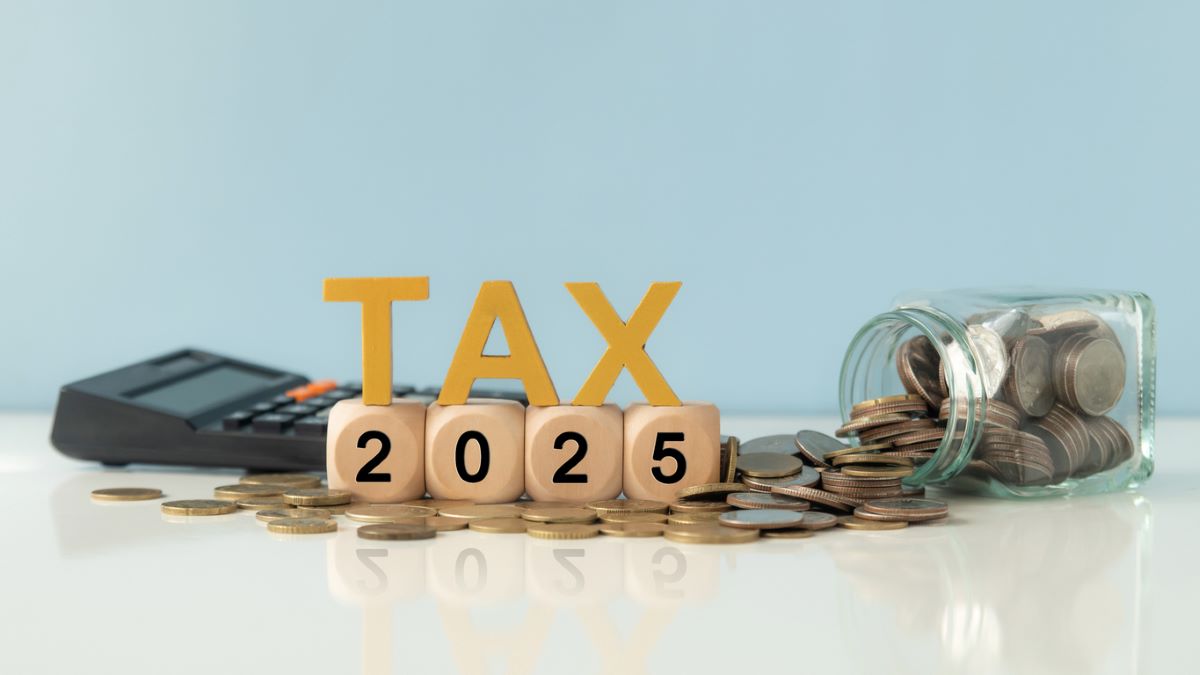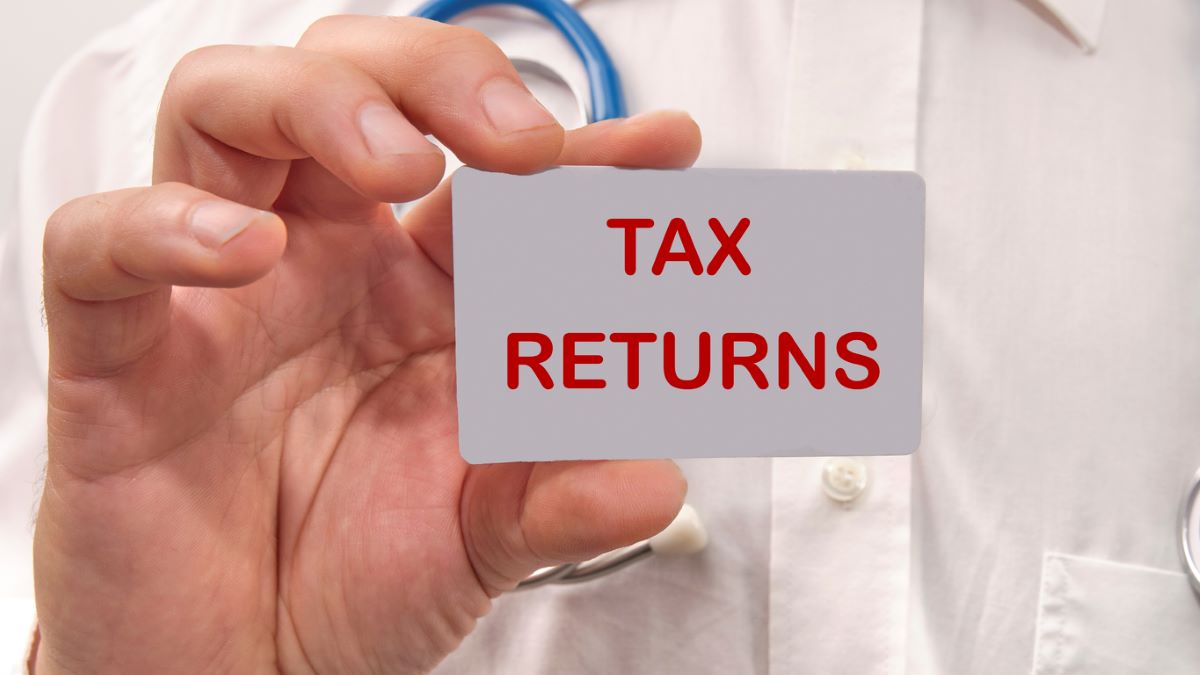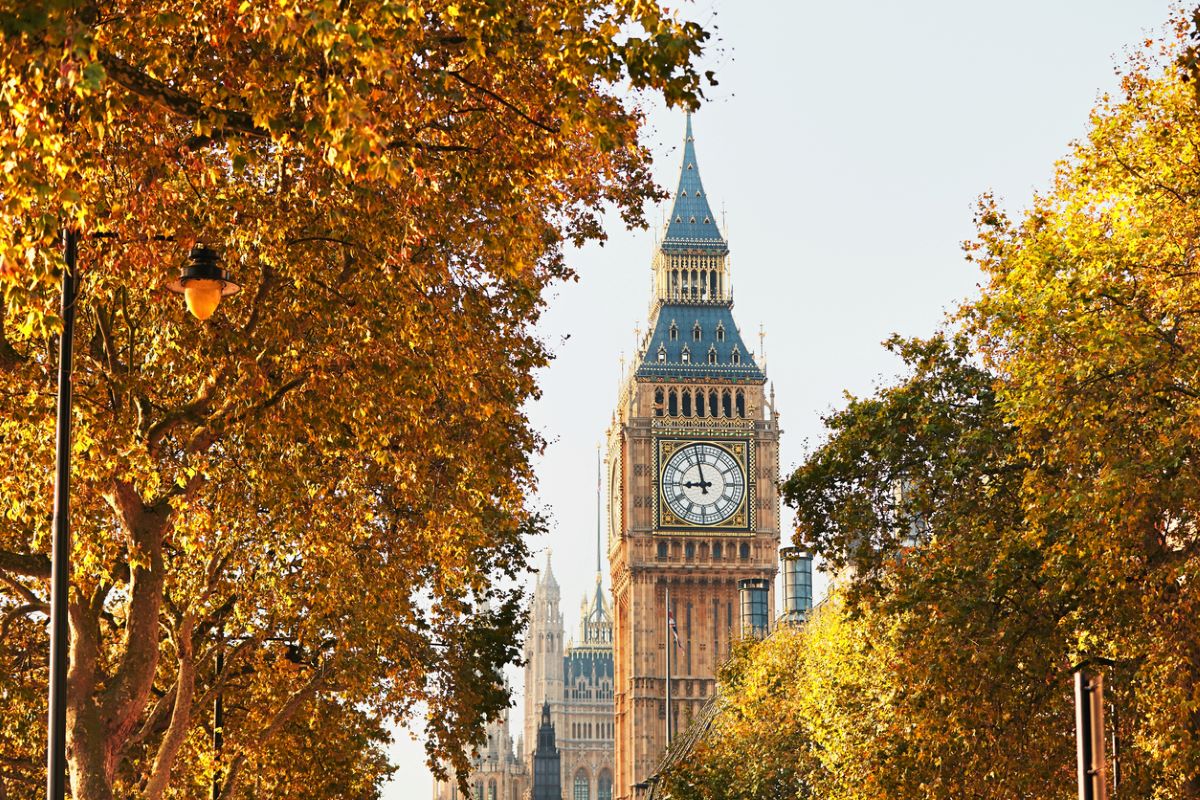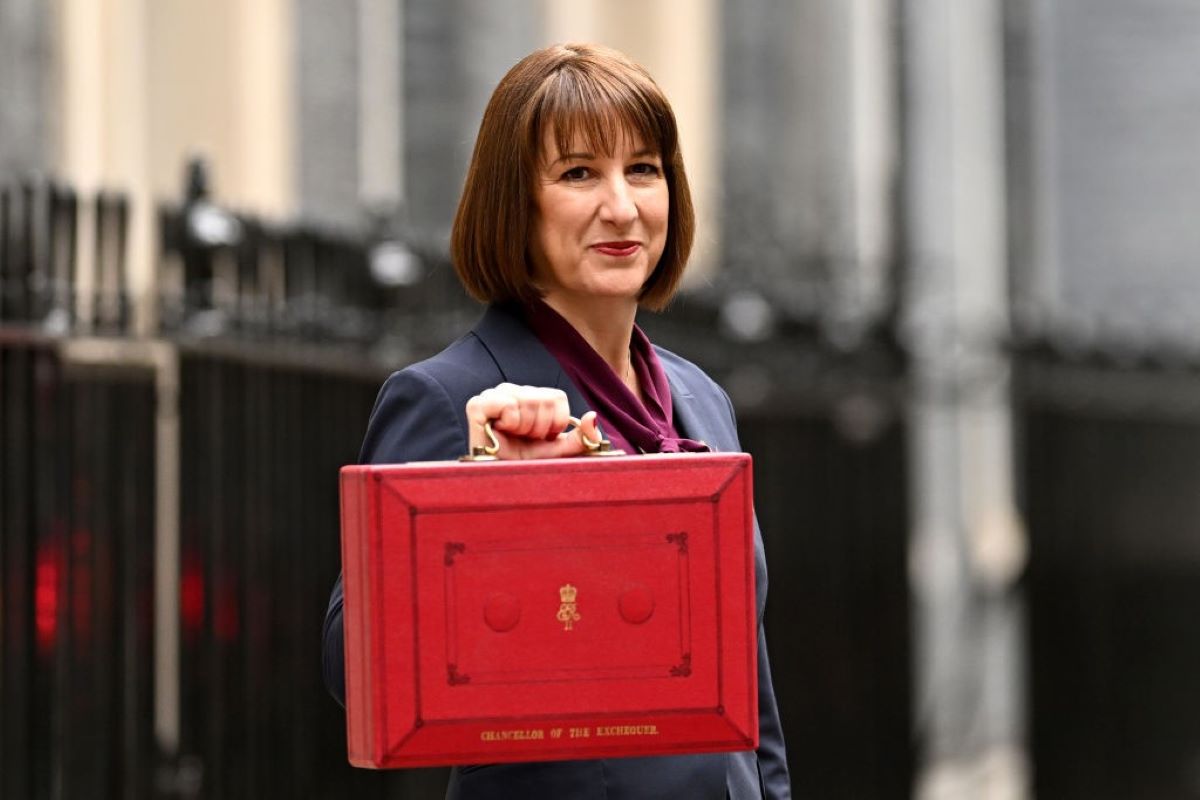Tax return deadline fast approaching
Recent data from HM Revenue & Customs (HMRC) revealed 5.4 million taxpayers are still racing against the clock to file their tax returns as the 31 January deadline looms. Missing the deadline could result in fines, beginning at £100 and escalating into legal proceedings. This is in addition to the eye-watering 7.25% interest charge on any late tax payments.
HMRC’s figures also revealed nearly 25,000 people began the new year by filing their tax returns on 1 January, while 38,260 taxpayers submitted their self-assessment submissions on New Year's Eve.
Myrtle Lloyd, HMRC's director general for customer services, urged prompt action: "We know completing your tax return isn’t the most exciting item on your new year to-do list, but it’s important to file and pay on time to avoid penalties or being charged interest.
"The quickest and easiest way to complete your tax return and pay any tax owed is to use HMRC’s online services – go to gov.uk and search ‘self-assessment’ to get started now."
What is Self-Assessment?
Self-Assessment is the process you go through each year where you complete a tax return and declare your income, capital gains and any other income during that tax year to HMRC, outside of income tax that is normally deducted from your wage or pension.
Although most commonly done by those who are self-employed, anyone who has other income outside what is normally deducted from your wages and pension, need to complete a self-assessment form – which can be paper based or digital.
Irrespective of employment status, if you have received any untaxed income before the deadline of that tax year, you may need to complete a tax return. Even if that income comes from Ebay, Etsy or similar enterprises.
Who needs to submit a tax return?
You may need to submit a tax return if ANY of the following applied to you in the 2023/2024 tax year (6 April 2023 to 5 April 2024):
- You were self-employed and your income was more than £1,000
If you earned £1,000 or less, you may still need to do a self-assessment if you want to pay 'class 2' National Insurance contributions voluntarily to protect your entitlement to the state pension and certain benefits. - You earned more than £150,000 in taxable income. This threshold was £100,000 for the 2022/23 tax year but it's been increased. If your income is between £100,000 and £150,000 and that was the only reason you had to complete a tax return for 2022/23, you should have got a letter from HRMC telling you that you don't need to do one for 2023/24. If in doubt, contact HMRC directly to check.
- You claimed Child Benefit when you or your partner earned more than £50,000 a year
This is known as the high income Child Benefit charge. The income threshold has now been raised to £60,000 – but the older threshold still applies for the 2023/24 tax year. - You earned £10,000 or more before tax from savings interest, investments, shares or dividends
Between April 2022 and April 2024, the Bank of England base rate rose from 0.75% to 5.25%. As a result, savings rates (and therefore interest payments) went up across the board – so, even if you had the same amount saved, you're more likely to have hit the threshold in 2023/24 compared to the year before.
It should be noted that if you earn more than £1,000 but less than £10,000 on savings, then HMRC will automatically amend your tax code so you don’t need to fill in a form.
Other scenarios to consider
- You earned money from renting out property such as a buy-to-let property or portfolio (or from other untaxed income, such as tips or commission).
- You earned income from abroad.
- You need to pay Capital Gains Tax.
- You received income from a trust.
- You filed a self-assessment tax return for the 2022/23 tax year (unless you've already told HMRC you no longer need to or HMRC has told you not to).
When you need to submit a tax return
This tax year ends on 5 April 2025 and all tax returns for this year will need to be completed by 31st January 2026.
Most importantly, you must tell HMRC by 5 October if you need to complete a tax return and have not sent one before. Then there are different deadlines for different types of tax returns.
If you’re doing a paper tax return, you must submit it by midnight 31 October 2025. HMRC must receive a paper tax return by 31 January if you’re a trustee of a registered pension scheme or a non-resident company. You cannot send a return online.
If you’re doing an online tax return, you must submit it by midnight 31 January 2026, and if you want HMRC to automatically collect the tax you owe from your wages and pension, then you need to submit your online tax return by 30 December.
In all cases you need to pay the tax you owe by midnight 31 January 2026.
If you’re interested in finding out more about how we can help you build a tax efficient portfolio, making best use of allowances available to you whilst ensuring your money is working hard, Why not give us a call on 0333 323 9065 or book a free non-committal initial consultation with a member of our team.
Arrange your free initial consultation
This article is intended for general information only, it does not constitute individual advice and should not be used to inform financial decisions.
The Financial Conduct Authority (FCA) does not regulate tax or trust advice.

More being caught in 60% tax trap
A freedom of information request by the Financial Times to HM Revenue & Customs (HMRC) revealed that the number of individuals caught in the 60% tax trap had risen by 45% in just two years.
The figures showed that in the 2021-22 tax year, a total of 436,000 taxpayers fell into the 60% tax bracket, while in the 2023-24 tax year, this number had risen to 634,000, an increase of 45%.
Unfortunately, this trap is only becoming more widespread with time as wages grow but personal allowance thresholds remain frozen.
A major driver of this is the income tax bands have been frozen until 2028, and this includes the tax-free personal allowance threshold, which has been frozen at £12,570 since April 2021. With Chancellor Rachel Reeves announcing in her Autumn Budget that the freeze would be maintained until April 2028, the number of taxpayers caught in the tax trap will likely only increase further as wages creep to keep up with inflation and the rising cost of living but thresholds remain the same.
Check out our article to find out how you can take steps to avoid these higher rate tax traps.
What is the ‘60% tax trap’?
The ‘60% tax trap’ refers to the income band of £100,000 to £125,140, between which earners will effectively experience a 60% tax rate on their income. This is because for every £2 you earn over £100,000 each year you lose £1 worth of your £12,570 tax-free personal allowance. Your tax rate only reduces to the additional rate of 45% after the entirety of your personal allowance for that year has been eroded, i.e. on income above £125,140.
For example, someone earning £100,000 who receives a bonus of £1000 will only receive £400 of his bonus. This works out as follows:
He immediately loses £400 to the standard 40% higher rate tax, leaving him £600.
As he loses £1 for every £2 earned over £100,000, his £1000 bonus translates to £500 deducted from his original tax-free personal allowance. This deduction of £500 is then retroactively taxed at his current standard rate of 40%, meaning he pays another £200.
After paying the original tax of £400 and then the subsequent tax of £200, he is left with only £400 of his original £1000 bonus, meaning he has effectively experienced a 60% tax rate.
If you’re concerned you may fall into the 60% tax trap, why not get in touch and see how we can help. Controlling your income with your pension to get the best outcome for your personal financial situation is complex and time-consuming. Many people find that getting the help of a financial adviser will seriously improve their financial outcome and wellbeing.
If you want to find out more, why not give us a call on 0333 323 9065 or book a free non-committal initial consultation with one of our chartered financial advisers to find out how we can help.
Arrange your free initial consultation
The Financial Conduct Authority (FCA) does not regulate cash flow planning, estate planning, tax or trust advice.
This article is intended for general information only, it does not constitute individual advice and should not be used to inform financial decisions.

HMRC rakes in nearly £1bn in late filing penalties since 2018
A recent freedom of information request forced HM Revenue & Customs (HMRC) to reveal the five-year high amount of late filing penalties they had accrued in the 2022/23 financial year.
The amount raked in by HMRC from those who failed to file their self-assessment tax returns on time reached £220m in the 2022/23 tax year, up from £185m in 2021/22. The figures brought the total amount HMRC had received in late filing fines since 2018/19 to just shy of £1bn at £980m, an unprecedented amount.
Dan Neidle, founder of the Tax Policy Associates Think-Tank, said that many of those who now need to pay tax are on very low incomes, often just exceeding the £12,570 tax-free personal allowance threshold.
“Many people on low incomes have difficult lives, often with mental and physical disabilities. They’re hard to reach with traditional information campaigns [reminding them to file a return]. But the system doesn’t account for that” he said.
The Tax Return Deadline
Under normal circumstances, those who do not file their tax returns by the deadline receive penalties for late submission. This usually comes in the form of a 5% late payment charge on any unpaid tax that is still outstanding.
Late payment interest is charged on overdue payments on account. For most tax payments, HMRC charges late payment interest at an annual rate equal to the Bank of England base rate plus 2.5%. Following successive hikes in base rate over an 18-month period, HMRC’s late payment interest rate now stands at 7.25%.
Many taxpayers may be significantly worse off than they were a couple of years ago due to the increased cost of living. Nevertheless, their average take-home income may well have increased, due to inflation-chasing pay rises and inflation-linked increases to pensions, as well as increased returns on savings income
The Deadline Penalties
If you don’t file your tax return correctly by the deadline, you will be sanctioned with a penalty depending on how late you file your return. This penalty will begin at an initial £100 fixed fee and progress as follows:
- After 3 months, daily penalties of £10 will start, up to £900 in total
- After 6 months, you will be sanctioned for 5% of the total tax due or £300, whichever is greater.
- After 12 months, you will be sanctioned for a further 5% of the total tax due or £300, whichever is greater.
Additionally, the interest rate that HMRC charges on unpaid tax is one of the highest it’s been in 15 years at 7.25%. This is in stark contrast to the interest rate paid to those that are owed money by HMRC, which is at a rate of only 2.5%. Many have criticised this as an example of ‘one rule for us, another rule for them’ when it comes to taxation policies.
That said, HMRC has made it clear that for those that can demonstrate a genuine reason why they cannot make the deadline, they will be ‘lenient’ in their penalty process. The penalties mainly exist to punish deliberate tax evaders and those who persistently fail to complete their tax returns.
With interest rates remaining high, it’s more important to keep on top of your finances than ever before.
Make sure you’re getting the most out of your savings. If you have over £100,000 in savings, investments or pensions, why not get in touch for a free initial financial review worth £500.
Arrange a free initial consultation
This article is intended for general information only, it does not constitute individual advice and should not be used to inform financial decisions.
The information contained within this article is based on our understanding of legislation, whether proposed or in force, and market practice at the time of writing. Levels, bases and reliefs from taxation may be subject to change.
The Financial Conduct Authority does not regulate tax advice.

What if... you could protect your legacy from the taxman
In 1789, Benjamin Franklin wrote “...nothing can be said to be certain, except death and taxes”.
In the case of Inheritance Tax (IHT) both of these certainties coincide.
IHT, in one form or another, has been around in the UK ever since the Stamps Act 1694, and has, at least in my working life, always been an emotive subject and the desire of successive Governments to tax people on death has been countered by equally enthusiastic innovations to avoid it.
Arrange a free initial consultation
After Labour’s recent budget, the subject of IHT has been thrust right back on to centre stage with a double whammy. The exemptions for agricultural property and pensions will be either reduced or removed over the next few years (agricultural property changes from 6 April 2026 and pension changes from 6 April 2027). There is now probably more demand for advice on IHT than at any time I can remember.
IHT planning is not a new thing, although it is true to say that there is probably less room for manoeuvre than there used to be. Over the past thirty years or so, many previously effective methods have been stamped out by HMRC and, in some cases, it has been costly to unwind complex arrangements which have been rendered useless.
With the inherent dangers of contentious schemes, it may be worthwhile visiting, or even revisiting, some of the uncontentious methods which have passed the test of time.
There are still measures which can be taken to mitigate, if not eliminate, IHT but before doing anything, it’s important to know what the current situation is going to mean for you and your family, and the first step is to fully understand the current exemptions.
What are the current IHT exemptions?
Under current rules, individuals (providing they are UK domiciled) are entitled to pass down on death, the entirety of their assets to their spouse of civil partner, completely free of IHT. This is known as inter-spousal exemption. So, for many couples, this means that the liability occurs only on second death.
Everyone is entitled to pass on assets with an exemption (known as the Nil Rate Band or NRB) of £325,000. In addition, if you own a primary residence, there is an additional exemption of £175,000 known as the Residents Nil Rate Band or RNRB when passing down to direct decedents. Importantly, both the NRB and the RNRB, on death, can be inherited by the surviving spouse or civil partner (unless gifts were made seven years before death. As such, most couples, who have not gifted and have a house, will, on second death, have an NRB of £1m (although the RNRB is tapered down if the individual estate is in excess of £2m). It is the estate in excess of the NRB which will be taxed at 40% (or 20% for some other assets including agricultural property).
Gifting
Gifting is probably the oldest and most effective form of IHT provision. There are host of smaller exemptions) but for meaningful gifts the basic concept is that you can gift assets and, providing you do not retain any ‘enjoyment’ from them, they will be outside of the estate once seven years has lapsed from the date of the gift. If you die before the seven years has lapsed then it becomes a failed gift and some or all of the gifted assets will still be considered part of the estate for IHT purposes. Many people have heard about ‘taper relief’ whereby the liability to IHT reduces after the third year of a gift. The rules for taper relief are complex and, in reality, only apply to gifts in excess of the NRB of £325,000.
Retaining an enjoyment (such as gifting your house to your children but still living in it) will render the gift a ‘gift with reservation’ and it will fail the exemption test and still be aggregated with the rest of the estate on death.
It is worth noting that all gifts or legacies to charities are completely exempt.
The idea of gifting appeals to many but they do not like the idea of gifting large assets, outright, to young (or sometimes not so young) children. In these circumstances, trusts can play a big part.
Trusts
Although definitely more onerous to administer these days, trusts still represent an effective mechanism for gifting and retaining control (as a trustee) without gaining any ‘enjoyment’. Assets can be gifted into trusts and (subject to permissions of the trust) the trustees can decide who benefits and, crucially, when.
Another consequence of the Chancellor Rachel Reeve’s IHT hit on pension schemes in the Autumn Budget is that some Death In Service (DIS) arrangements will be caught in the tax net. DIS is normally an employer sponsored benefit which pays a lump sum on the death of an employee. If the scheme is written under trust, the proceeds bypass the deceased’s estate and will not be affected. However, if there is no trust in place, the proceeds effectively form part of the pension fund which will, after 2027 be subject to IHT (subject to consultation). Anyone in doubt about their own scheme should seek advice.
There are many different types of trust so financial and legal advice is always recommended.
Life Insurance
Many years ago, ‘whole of life’ insurance policies were a popular and uncontentious way of dealing with IHT. Since the budget, there will be many who simply cannot gift assets as the assets themselves are needed to generate income. For those, insurance could be a simple and effective solution and at TPO we anticipate a resurgence in the popularity of this tried and tested route.
Life insurance does not remove IHT, but it provides the beneficiaries of the estate with a tax-free lump sum at precisely the time when HMRC will be knocking on the door of the executors asking for a large IHT bill! In essence, a life insurance policy is effected which is designed to pay a lump sum on death, or second death. The policy is written into a simple trust which then pays the proceeds directly to the beneficiaries of the estate (normally the children of the deceased parents) and as it is in trust it does not fall into the estate for IHT purposes. This is crucial because if there is no trust, the proceeds will fall into the estate of the deceased, and this will merely exacerbate the problem. The cost of the policy can be cheaper than you think.
The cost of the policy can be cheaper than you think. For instance, at the time of writing, a husband and wife, aged 55, both non-smokers, can secure a sum assured of £500,000, payable on second death for £442.02 per month (subject to satisfactory underwriting). This may sound a lot but providing premiums are maintained the policy definitely will pay out on second death, and it would take over ninety-four years before the premiums added up to more than the sum assured. *
One area of planning which always raises an eyebrow is for unmarried couples to get married (thus securing interspousal exemption). Hardly a romantic reason to get married, I know, but from an IHT point of view, stone cold good sense!
This is by no means an exhaustive exploration of IHT mitigation and, as always, advice from a Chartered Financial Planner and/or solicitor should be sought.
If you’d like to learn more about how to minimise the tax on your estate, why not get in touch for a free initial consultation.
* Source L&G - The Exchange
Arrange a free initial consultation
This article is intended for general information only, it does not constitute individual advice and should not be used to inform financial decisions.
The Financial Conduct Authority (FCA) does not estate planning, tax or trust advice.
The information contained in this article is based on our understanding of legislation, whether proposed or in force, and market practice at the time of writing. Levels, bases and reliefs from taxation may be subject to change.

Inheritance tax receipts soar following Autumn Budget
Latest figures from HM Revenue & Customs (HMRC) revealed that inheritance tax (IHT) receipts have risen once again, reaching £5 billion in the first seven months of the 2024/25 financial year, marking an 11% rise compared to the same period last year.
These figures come in the wake of Chancellor Rachel Reeves’ recent Budget, which introduced significant changes to the inheritance tax system. Among the reforms were an extension of the freeze on current inheritance tax thresholds for an additional two years and the inclusion of inherited pensions within the scope of inheritance tax starting in 2027.
Between 2024-25 and 2028-29, the OBR now estimates the Treasury will collect more than £50bn in inheritance tax alone, a 19% increase of more than £8bn compared to the forecast made following ex-chancellor Jeremy Hunt’s Spring Budget in March.
To find out more about the effects of these changes, check out our recent article on succession planning for farmers.
What is inheritance tax?
Inheritance Tax (IHT) is a tax levied by the Government on the estate of a deceased person in the UK. This includes all of their assets including property, personal belongings, and investments.
However, this levy only applies to the total value of the estate that exceeds the IHT threshold or ‘nil-rate band’ - NRB. As of the 2023/24 tax year, the threshold is set at £325,000. Anything above £325,000 could be subject to up to 40% inheritance tax and anything below this threshold is tax-free.
The Residence nil rate band also plays a role in inheritance tax. The residence nil rate band was introduced in 2017 and is an amount that can be passed on after death without any inheritance tax payable in addition to the standard nil rate band, giving a potential of £500k exception per person or £1m for a couple.
Why are IHT receipts always on the rise?
The number of estates across the UK that are being pulled into the IHT net are increasing each year.
Total IHT receipts collected by the Government has been steadily on the rise since the IHT threshold freeze. This was initially announced by the then Chancellor, Rishi Sunak, in his 2021 Budget. The Budget outlined that the IHT threshold would be frozen for five years until 2026. However, after ex-Chancellor Jeremy Hunt’s 2023 Autumn Statement, it was confirmed that the freeze would be extended a further two years until April 2028, and then after Rachel Reeves’ 2024 Autumn Statement, this was extended once again for a further two years until April 2030.
Due to wage inflation coupled with ever increasing property value across the UK, the freeze essentially means that a greater number of people will cross the inheritance tax threshold each year. Many have been calling this move an example of ‘stealth tax’, as the freeze ultimately means an increasing number of Britons will fall into the tax threshold each year until the freeze ends in April 2030, and by then the Government will have collected billions in extra inheritance tax.
The inheritance tax allowance of £325,000 was increased from £312,000 on 6 April 2009. This means the IHT nil rate band has been frozen for over 14 years now and will keep allowances frozen until at least 5 April 2030. That’s a staggering 21 years of higher taxes on death.
If you’re interested in how to manage your inheritance tax to ensure the best possible wealth protection for you or your family, we can help. Give us a call on 0333 323 9065 or book a free non-committal initial consultation with a member of our team to find out more.
Arrange a free initial consultation
This article is intended for general information only, it does not constitute individual advice and should not be used to inform financial decisions.
The Financial Conduct Authority (FCA) does not regulate tax advice.

Succession planning for farmers
The Chancellor, Rachel Reeves, announced various changes to legislation in her Autumn Budget in late October 2024, including changes to estate planning. As a result, it has become important now more than ever to plan appropriately for the next generation, especially for those looking to pass down family businesses including family-run farms.
Arrange your free initial consultation
How Does Inheritance Tax Work?
Inheritance Tax (IHT) is a tax payable on the estate of an individual following their death. There is an IHT nil-rate band (NRB) which is the value of assets that can be passed on without incurring any IHT charge which is currently frozen at £325,000 per person until 2030.
There is also a residence nil-rate band (RNRB) which is an additional IHT allowance of £175,000 per person when property that an individual owned and lived in as their main residence at some point is passed on to their direct descendants (children or grandchildren). Therefore, each individual currently has a maximum IHT allowance of £500,000.
Spouses and civil partners are able to inherit assets on the death of their spouse/civil partner free of IHT, however, those assets would form part of the surviving spouse’s estate. They can also inherit their NRB and RNRB and combine them with their own to provide them with maximum combined IHT allowances of £1m on second death.
If an individual has an estate worth over these allowances on their death, the executors are liable to pay IHT at the rate of 40%.
What is Agricultural Relief?
Agricultural relief is an IHT relief for individuals wishing to pass on their agricultural property to the next generation. Agricultural property includes agricultural land, crops and farm buildings but not animals or equipment. The relief is given on the agricultural value of the land, but not on any developmental value, and it is currently 100% for owner-occupied farms and 50% for landlords who let out their farmland. However, the government are making changes to this relief from the 6th of April 2026, with only the first £1m of agricultural property receiving the full 100% relief and any further agricultural property receiving relief at 50%, meaning any agricultural property over the £1m is taxed at an effective rate of 20%.
If a farm is jointly owned by a married couple or those in a civil partnership, they would be able to make use of their full NRB and RNRBs as well as £1m of agricultural relief each. However, unlike the NRB and RNRB, this £1m allowance is not transferrable to a spouse/civil partner on death. Therefore, a couple could only pass down up to £3m to the next generation completely IHT-free provided £1m was passed on to beneficiaries other than the remaining spouse/civil partner on the first spouse’s/civil partner’s death. If this were not the case, only up to £2m would be able to be passed on IHT-free. As a result of these changes, the government have estimated that 75% of farmers will not be affected by these changes. However, this means 25% of farmers will now leave IHT bills to their beneficiaries upon the transfer of their farming property.
How Can I Reduce My IHT Liability?
Gifting Allowances
There are a number of gifting allowances which can be utilised to reduce the size of your estate and subsequently an IHT liability for your beneficiaries:
Every individual has an annual exemption of £3,000 per tax year, which can be gifted with no IHT consequences. If any of the allowance is unused from the previous tax year, this can be carried forward to the current tax year. Therefore, a couple who did not use their allowances last tax year, can gift up to £12,000 between them IHT-free this tax year, and £6,000 per year thereafter.
Gifts of up to £250 to any one person in any one tax year are also exempt. This exemption can be used any number of times in respect of different recipients. However, it’s important to note that this exemption cannot be used in addition to larger gifts. For example, if an individual made a gift of £3,250 using up their £3,000 annual exemption, the £250 small gift exemption would not cover the excess amount over the £3,000. However, it’s still possible to make an unlimited number of small gifts of £250 to individuals other than the recipient of the £3,000 gift, in addition to this annual exemption amount.
Individuals can also make gifts out of their ‘normal expenditure’. To be exempt, these gifts must be made out of an individual’s income, and it must be part of their normal expenditure meaning it is habitual or regular, not just a one-off payment. Payments do not have to be a fixed amount each time, but they must be consistently regular, and the individual must be left with sufficient income to maintain their usual standard of living after allowing for all transfers from normal expenditure.
There are also various other gifting allowances such those for making wedding gifts and gifts to charity.
Lifetime Gifts
Lifetime gifts can be made over and above these gifting allowances, but they would be constituted as either a Potentially Exempt Transfer (PET) if made to an individual or a bare or disabled trust, or a Chargeable Lifetime Transfer (CLT) if made to the majority of other types of trusts.
If a PET is made and the donor survives for 7 years, the gift becomes fully exempt and escapes tax entirely. However, if the donor does not survive for 7 years after the gift has been made, there may be some IHT to pay.
When a PET is initially made, it uses up the NRB. For example, if an individual makes a PET of £100,000, their NRB allowable against their estate if they were to die before 7 years had passed, would be £225,000. Once 7 years have passed, the NRB would be £325,000 once again.
IHT tapering relief also applies to PETs that are in excess of an individual’s NRB, and they pass away after 3 years of the gift being made which is outlined in the table below.
| Years between Gift and Death | Effective rate of IHT |
|---|---|
| More than 3 but not more than 4 | 32% |
| More than 4 but not more than 5 | 24% |
| More than 5 but not more than 6 | 16% |
| More than 6 but not more than 7 | 8% |
For example, if an individual makes a PET of £350,000 in January 2020 and passes away in March 2023, they have used up their entire £325,000 NRB and therefore £25,000 of the gift will be liable to IHT. However, as 3 years have passed since the gift was made, the effective rate of IHT would only be 32% meaning the beneficiary would only pay £8,000 instead of £10,000. In this example, the original donor would have no NRB to offset against their estate as it has been used up by the £350,000 PET, therefore, the beneficiaries of the estate may be liable to pay more IHT.
Whole of Life Insurance Policy
Other avenues can be explored to make plans for your estate and your beneficiaries such as taking out a whole of life insurance policy, with the sum assured being equal to your projected IHT liability. This can be a relatively cost-effective way of making provisions to cover your IHT bill, especially if the policy is taken out earlier in your life which would result in lower premiums. It is important to ensure these policies are written into trust in order to ensure any beneficiaries would receive the full amount otherwise, the lump sum payout would form part of the estate and would therefore be liable to IHT itself.
How we can help
Inheritance tax planning can be an incredibly complex topic, especially when involving trusts. This article is intended for general information only, it does not constitute individual advice and should not be used to inform financial decisions.
If you are concerned that you may be affected by the changes the government has made to agricultural relief or about your IHT planning in general, please feel free to contact us to book a free initial consultation with one of our expert advisers. We’d be happy to discuss how we might be able to provide you with value and peace of mind going forwards.
Kirsty Stone, has been present on BBC lately, where she was initially asked to give her thoughts about this important issue on BBC Radio 4 Money Box, but this led to an interview on BBC Radio 5 Live Wake up to Money and live on the BBC News Channel on 19th November 2024.
Arrange your free initial consultation
This article is intended for general information only, it does not constitute individual advice and should not be used to inform financial decisions.
The Financial Conduct Authority (FCA) does not regulate estate planning, tax or trust advice.
The information contained in this article is based on our understanding of legislation, whether proposed or in force, and market practice at the time of writing. Levels, bases and reliefs from taxation may be subject to change.

HMRC increases unpaid IHT rate to 8.75%
The Chancellor Rachel Reeves announced her plan to increase the interest rate HM Revenue and Customs (HMRC) can charge on unpaid inheritance tax, increasing the rate by 1.5%, from 2.5% to 4% above the Bank of England base rate, to charge 8.75% per annum from April 2025.
Presented as a clampdown on tax avoidance, this change could add a significant increase in the monthly payments of bereaved families late in their inheritance tax bill cycle. For a household with an inheritance tax liability of £1m, the late repayment charges would amount to £87,500 a year, or nearly £1,700 of interest per week, payable to HMRC.
Arrange a free initial consultation
The current system is that HMRC charges late payers by 2.5% interest on top of the Bank of England’s base rate, which fell to 4.75% as recently as last week. However, the new measures proposed in the Reeves’ Budget will raise the base charge to 4% in April 2025, raising an estimated £215m a year for HMRC by 2029-30, according to official figures.
Probate delays could cost bereaved families
As it stands, families have six months to pay inheritance tax after the death of a beneficiary before they become liable to pay any late payment charges. Many families require a grant of probate, which is the legal document used to access the deceased’s funds and take control over any assets they owned.
However, it currently takes an average of nine weeks to obtain a grant of probate, and in some more complex cases, it can take over a year. Recent reports have reported on delays in probate being granted as a result of a backlog at HMRC. This means that families that for whenever reason cannot access the deceased’s assets within the deadline, may be getting hit with 8.75% tax per annum on their inheritance tax bill while they wait.
What is inheritance tax?
Inheritance Tax (IHT) is a tax levied by the Government on the estate of a deceased person in the UK. This includes all of their assets including property, personal belongings, and investments.
However, this levy only applies to the total value of the estate that exceeds the IHT threshold or ‘nil-rate band’. As of the 2024/25 tax year, the threshold is set at £325,000. Anything above £325,000 could be subject to up to 40% inheritance tax and anything below this threshold is tax-free.
In addition to the ‘nil rate band’ an individual may qualify for the £175,000 residence nil-rate band (‘RNRB’). This is available to those passing on a qualifying residence on death to their direct descendants.
Any unused nil-rate band or residence nil-rate band following the death of an individual can be transferred to the surviving spouse or civil partner. This means that since 6 April 2020, qualifying estates have been able to pass on up to £500,000 and, if the nil-rate band and residence nil-rate band remain unused, the qualifying estate of a surviving spouse or civil partner is still able to pass on up to £1 million without an Inheritance Tax liability.
There were also new changes announced in the recent Budget with affects pensions and business. More details can be found here.
If you’re concerned about your inheritance tax bill and would like to ensure the best possible wealth protection for you or your family, we can help. Give us a call on 0333 323 9065 or book a free non-committal initial consultation with a member of our team to find out more.
Arrange a free initial consultation
This article is intended for general information only, it does not constitute individual advice and should not be used to inform financial decisions.
The Financial Conduct Authority (FCA) does not regulate estate planning, tax or trust advice.

The new 67% tax trap
During the Autumn Budget, Chancellor Rachel Reeves announced that inherited pensions will be subject to inheritance tax from March 2027.
Currently, individuals can pass on any unspent defined contribution pension pots to loved ones free of all inheritance tax. But these new measures will mean that the unspent pension value will be combined with your other assets and subject to 40% inheritance tax should the combined value exceed the £325,000 nil-rate band.
This idea has drawn criticism for opening up the possibility of a ‘67% tax trap’ where applying inheritance tax to pensions will result in that money being subject to a double taxation, essentially being taxed once for the inherited pension and then again if death occurred after age 75, subject to the beneficiary’s rate of Income Tax.
How would the ‘67% tax trap’ really work?
Currently, if someone dies before age 75, their beneficiaries get all the pension without any tax taken off. But from age 75, they pay income tax on the money at their marginal rate.
As things stand, from March 2027, beneficiaries may have to pay two sets of tax before receiving an inherited pension. First inheritance tax, then income tax.
Let's say someone dies aged 75 leaving £100,000 of pension chargeable to IHT. Straight away, £40,000 would go to HMRC.
Then, when the family drew the remaining £60,000, they'd pay income tax on the money at their marginal rate. So a higher-rate 40% taxpayer would lose another £24,000.
In total, they'd just get £36,000 from a £100,000 pension, meaning an effective tax rate of 64%.
However, someone who has tipped into the 45% additional rate income tax band would end up with just £33,000, meaning the total effective tax rate rises to 67%.
Who will be affected?
The Government estimates this will result in about 10,500 more estates paying Inheritance Tax than would otherwise have been the case, raising £1.46bn a year by April 2030.
That would constitute a substantial increase on the numbers paying now. The latest available figures from 2020/21 showed 27,800 estates triggered an IHT charge, around 4.4% of total deaths. That figure is sure to rise with this change.
Historically, these high bands of taxation have been intended only for the very wealthy, but with wage inflation to keep up with the high cost of living while tax thresholds remain the same, more everyday working people will be pulled into these higher tax brackets.
Controlling your income with your pension to get the best outcome for your personal financial situation is complex and time-consuming for most people. When dealing with specific margins and tax optimisation, many find that soliciting the help of a financial adviser can free up a great amount of otherwise lost time to focus on the important things.
If you want to find out more, why not give us a call on 0333 323 9065 or book a free non-committal initial consultation with one of our experienced advisers to find out how can help.
Arrange a free initial consultation
This article is intended for general information only, it does not constitute individual advice and should not be used to inform financial decisions.
The Financial Conduct Authority (FCA) does not regulate estate planning or tax advice.
The information contained within this article is based on our understanding of legislation, whether proposed or in force, and market practice at the time of writing. Levels, bases and reliefs from taxation may be subject to change.

Autumn Budget 2024
In one of the longest ‘Budget’ speeches in memory, Chancellor Rachel Reeves gave the first Labour Budget speech for nearly 15 years on 30 October 2024.
Here we’ve summarised the main elements of interest for financial planning, with further details on tax rates and allowances for 2025/26 (to compare to 2024/25) available on the government website.
If you have any concerns or questions about any of the announcements and would like to speak to one of our expert financial advisers, contact us for a free initial consultation to see how we can help.
Arrange a free initial consultation
Non- domicile changes
The non-domicile tax regime is to be abolished from 6 April 2025. Domicile will no longer be a feature of the UK tax system and will be replaced by a system based on residency.
The government will:
- Introduce a new 4-year foreign income and gains regime for new arrivals who have not been UK tax resident in the previous 10 years
- Allow individuals previously taxed on the remittance basis to remit pre-6 April 2025 foreign income and gains using a new Temporary Repatriation Facility
- Reform Overseas Workday Relief
- Replace the domicile-based system for inheritance tax with a residence-based system
VAT on private school fees
From January 2025, 20% VAT will apply to private school fees across the UK and the business rates charitable rates relief for private schools in England will be removed.
Income tax and personal National Insurance (NI)
Income tax bands and personal NI thresholds remain frozen until April 2028. This time period hasn’t been extended and from 2028/29 these bands/thresholds will increase with inflation.
Capital gains tax (CGT) changes
Investors’ Relief
Investors’ Relief (IR) provides for a lower rate of CGT to be paid on the disposal of ordinary shares in an unlisted trading company where certain criteria are met, subject to a lifetime limit of £10 million of qualifying gains for an individual.
This measure reduces the lifetime limit from £10 million to £1 million for IR qualifying disposals made on or after 30 October 2024.
CGT rates
The main rates of Capital Gains Tax (that apply to assets other than residential property and carried interest), will increase from 10%/20% to 18%/24% respectively for disposals made on or after 30 October 2024.
The main rate of Capital Gains Tax that applies to trustees and personal representatives will increase from 20% to 24% for disposals made on or after 30 October 2024.
The rate of Capital Gains Tax that applies to Business Asset Disposal Relief and Investors’ Relief is increasing to 14% for disposals made on or after 6 April 2025 and from 14% to 18% for disposals made on or after 6 April 2026.
Carried interest
Carried interest, which is a form of performance-related reward received by fund managers, primarily within the private equity industry, will be subject to a CGT rate of 32% from April 2025 (current rates are 18% and 28%). From April 2026, carried interest will be subject to a revised regime within the income tax framework.
Inheritance tax (IHT) changes
Freezing of IHT thresholds
The Inheritance Tax thresholds were already fixed at their current levels until April 2028. This time period has been extended to April 2030. This measure will fix the:
- Nil-rate band at £325,000
- Residence nil-rate band at £175,000
- Residence nil-rate band taper, starting at £2 million
Inherited pensions
From 6 April 2027, when a pension scheme member dies with unused funds or without having accessed all of their pension entitlements, those unused funds and death benefits will be treated as being part of that person’s estate and may be liable to Inheritance Tax. The current distinction in treatment between discretionary and non-discretionary schemes will be removed.
The change will apply to both DC and DB schemes. It will apply equally to UK registered schemes and QNUPS. This will ensure that most pension benefits are treated consistently for Inheritance Tax purposes, regardless of whether the scheme is discretionary or non-discretionary, DC or DB.
A small number of specified pension benefits will remain outside scope for Inheritance Tax, including where funds can only be used to provide a dependants’ scheme pension. These are currently out of scope in non-discretionary schemes and so will remain out of scope under this change.
Pension scheme administrators will become liable for reporting and paying any Inheritance Tax due on pensions to HMRC. This will require pension scheme administrators and personal representatives to share information with one another.
A technical consultation has been issued on the processes required to implement these changes for UK-registered pension schemes. After the consultation, the government will publish a response document and carry out a technical consultation on draft legislation for these changes in 2025.
The government will continue to incentivise pension savings for their intended purpose of funding retirement, supported by ongoing tax reliefs on both contributions into pensions and on the growth of funds held within a pension scheme.
Agricultural relief and business relief
From 6 April 2025, the existing scope of agricultural relief will be extended to include land managed under an environmental agreement with, or on behalf of, the UK government, devolved governments, public bodies, local authorities, or relevant approved responsible bodies.
From 6 April 2026, agricultural relief (AR) and business relief (BR) will be reformed, as summarised below:
- The 100% rate of relief will continue for the first £1 million of combined agricultural and business property to help protect family farms and businesses, and it will be 50% thereafter.
- The rate of business relief will reduce from 100% to 50% in all circumstances for shares designated as “not listed” on the markets of recognised stock exchanges, such as AIM.
The reforms are expected to only affect around 2,000 estates each year from 2026/27, with around 500 of these claiming agricultural relief and around 1,000 of these holding shares designated as “not listed” on the markets of recognised stock exchanges.
The government will publish a technical consultation in early 2025. This will focus on the detailed application of the allowance to lifetime transfers into trusts and charges on trust property. This will inform the legislation to be included in a future Finance Bill.
More detail is available at gov.uk.
National insurance
Employer NI is to increase to 15% (from 13.8%) from April 2025 and the secondary threshold will reduce to £5,000 (from the current £9,100), i.e. employer NI will become payable on an employee’s earnings above £5,000pa.
The Employment Allowance, a National Insurance exemption for smaller businesses, will increase to £10,500 (from £5,000).
Pensions
Qualifying recognised overseas pension scheme (QROPS)
The Overseas Transfer Charge (OTC) is a 25% tax charge on transfers to QROPS, unless an exclusion from the charge applies.
The government has announced that they are removing the exclusion from the OTC for transfers made on or after 30 October 2024 to QROPS established in the EEA and Gibraltar.
Also, from 6 April 2025, the conditions of OPS and ROPS established in the EEA will be brought in line with OPS and ROPS established in the rest of the world, so that:
- OPS established in the EEA will be required to be regulated by a regulator of pension schemes in that country
- ROPS established in the EEA must be established in a country or territory with which the UK has a double taxation agreement providing for the exchange of information, or a Tax Information Exchange Agreement
From 6 April 2026, scheme administrators of registered pension schemes must be UK resident.
Aligning the treatment of transfers to QROPS established in the EEA and Gibraltar with that of transfers to QROPS established in the rest of the world will help to ensure that some UK residents do not benefit from a double tax-free allowance whilst remaining in the UK and reduces the risk of around £1 billion of UK tax-relieved pension savings being transferred overseas across the scorecard.
Changing the conditions EEA schemes need to meet in order to become an OPS or ROPS will mean that they will have to meet the same conditions as those which are established anywhere else in the world.
Requiring scheme administrators of registered pension schemes to be UK resident will mean that all administrators of registered schemes will need to meet the same conditions.
Further details are available at gov.uk.
Employee Ownership Trusts and Employee Benefit Trusts
Targeted reforms are to be made to the Employee Ownership Trust tax reliefs to ensure that the reliefs remain focused on the intended purpose of encouraging and supporting employee ownership, whilst preventing opportunities for the reliefs to be abused to obtain tax advantages outside of these intended purposes.
Details are available at gov.uk
Stamp Duty Land Tax (SDLT)
The higher rates of Stamp Duty Land Tax (SDLT) for purchases of additional dwellings (second properties) and for purchases by companies is increasing from 3% to 5% above the standard residential rates of SDLT.
This measure also increases the single rate of SDLT payable by companies and other non-natural persons purchasing dwellings over £500,000, from 15% to 17%.
Both changes apply to transactions with an effective date on or after 31 October 2024.
National Minimum Wage
The National Living Wage will increase from £11.44 to £12.21 an hour from April 2025. The National Minimum Wage for 18 to 20-year-olds will also rise from £8.60 to £10.00 an hour.
State benefit and state pension increases
From April 2025, a 4.1% increase to the basic and new State Pension meaning the full new State Pension will rise from £221.20 to £230.25 a week, while the full basic State Pension will increase from £169.50 to £176.45 per week.
The Pension Credit Standard Minimum Guarantee will increase by 4.1% from April 2025, meaning an annual increase of £465 in 2025/26 in the single pensioner guarantee and £710 in the couple guarantee.
Working-age state benefits and the Additional State Pension will rise by 1.7% in April 2025, in line with inflation.
Furnished holiday lettings (FHL)
As previously announced, the furnished holiday lettings (FHL) tax regime will be abolished from April 2025, removing the tax advantages that landlords who offer short-term holiday lets have over those who provide standard residential properties.
The current rules provide beneficial tax treatment for furnished holiday lettings compared to other property businesses in broadly four key areas:
- Exemption from finance cost restriction rules (which restrict loan interest to the basic rate of Income Tax for other landlords)
- More beneficial capital allowances rules
- Access to reliefs from taxes on chargeable gains for trading business assets
- Inclusion as relevant UK earnings when calculating maximum pension relief
The abolition of the FHL regime will mean that income and gains will then:
- Form part of the person’s UK or overseas property business
- Be treated in line with all other property income and gains
If you’d like to discuss any of the changes announced in the Autumn Budget or would simply like to explore ways that you can minimise the amount of tax you pay on your wealth, why not get in touch and speak to one of our expert team of advisers. We’re offering anyone with £100,000 in savings, investments or pensions a free financial review worth £500.
Arrange a free initial consultation
This article is intended for general information only, it does not constitute individual advice and should not be used to inform financial decisions.
The Financial Conduct Authority (FCA) does not regulate cash flow planning, estate planning or tax.
The information contained within this article is based on our understanding of legislation, whether proposed or in force, and market practice at the time of writing. Levels, bases and reliefs from taxation may be subject to change.

Labour’s first Budget in 14 years - What's the impact?
Nearly 4 months after the general election, Chancellor Rachel Reeves finally delivered her eagerly anticipated Budget this afternoon.
It had been widely reported that there would be tax rises and speculation had been rife that pensions, capital gains tax and inheritance tax could be targeted to raise tax revenue following Labour’s manifesto commitment not to increase taxes on “working people”.
In the end, changes to all three of these areas were announced as Reeves looks to raise taxes by £40bn, though the changes were not to the extent that many had feared.
Arrange your free initial consultation
Capital Gains Tax
The main rate of Capital Gains Tax will increase for basic rate tax payers from 10% to 18% and for higher rate tax payers from 20% to 24%. This change will take effect immediately. Capital Gains Tax on second properties will remain unchanged.
There had been rumours that capital gains tax rates would be equalised with income tax rates, so the changes could be viewed as relatively modest compared to potential increases of this level.
Pensions
Investors will have been pleased to see that no changes were announced to the maximum tax free cash that can be taken from pensions or the tax relief available on pension contributions. However, it was announced that unused pension funds and death benefits payable from a pension will be included in the value of estates for inheritance tax purposes from 6 April 2027. This will affect individuals who were previously planning to leave their pensions to beneficiaries rather than to spend them in their lifetimes, though income taken from pensions in excess of tax free cash entitlements is subject to income tax and will then form part of the estate for inheritance tax purposes if not spent, so careful planning will be needed to ensure funds are not taxed twice.
Inheritance Tax
Aside from inherited pensions entering the estate for inheritance tax purposes in 2027, there were a couple of additional changes to inheritance tax rules.
Firstly, the freezing of the nil rate band (£325,000) and Residence Nil Rate Band (£175,000) until 2030 was announced. For reference, the Residence Nil Rate Band is generally available when a main residence is passed to direct descendants and this, combined with the nil rate band, generally gives married couples £1m which can be passed to direct descendants inheritance tax free on the second death of them both.
Additionally, there had been rumours that the inheritance tax break on shares listed on the Alternative Investment Market (AIM), if held for two years before death, would be scrapped. However, the Chancellor instead took a ‘half way’ approach by introducing a 20% inheritance tax rate in respect of these shares.
The Chancellor also announced changes to two lesser-known inheritance tax reliefs, Business Relief and Agricultural Relief, which will now be subject to a 20% inheritance tax charge on qualifying asset values over £1 million.
Income Tax, Employee’s National Insurance and VAT
As expected there were no increases in these three areas given they affect “working people”. However, with income tax bandings already frozen until 2028, there was an expectation the Chancellor may extend this date, but this did not prove to be the case, as the Chancellor confirmed the freezing of these bandings would end in 2028.
Given the above changes were not to the level expected, how has the Chancellor raised £40bn?
Employer’s National Insurance
A large proportion of this £40bn (an estimated £25bn) will be funded by a large increase in employer’s National Insurance contributions from 13.8% to 15% and a reduction in the threshold from which these are paid from £9,100 to £5,000.
Stamp Duty on second properties
Landlords will be disappointed to see the stamp duty surcharge on second properties increasing from 3% to 5% with effect from 31 October.
Non-Dom tax status abolished
As expected, the Chancellor confirmed Labour’s plans to abolish “non-dom” tax status.
Overall, after weeks of speculation, the tax rises announced in the budget were not to the extent that many had feared. Individuals with pensions will be relieved to see no reduction in their maximum tax free cash entitlement and no change to the tax relief they can receive on pension contributions. Investors may also feel increases in capital gains tax rates could have been worse. Instead, businesses were left to fund the majority of the tax rises through their National Insurance contributions.
However, these changes to inheritance tax, pensions and capital gains tax rules will mean financial plans will need to be revisited. To discuss the implications of the budget for your personal financial situation, please contact your TPO Independent Financial Adviser.
Arrange your free initial consultation
The Financial Conduct Authority (FCA) does not regulate estate planning or tax advice.
This article is intended as information only and does not constitute financial advice.
The opinions shared in this article are solely those of the individual and they do not necessarily reflect those of The Private Office.
The information contained in this article is based on our understanding of legislation, whether proposed or in force, and market practice at the time of writing. Levels, bases and reliefs from taxation may be subject to change.
